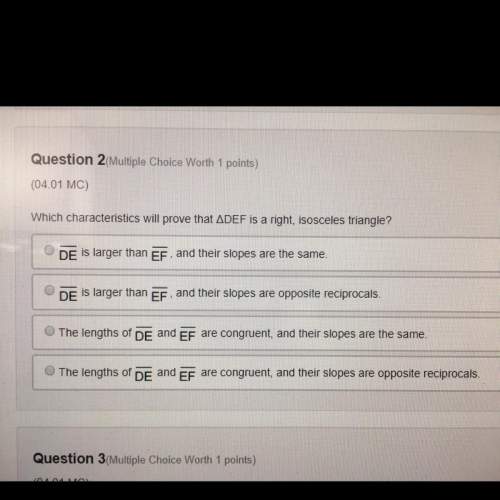
Mathematics, 04.11.2021 21:50 kolin89
For a sample of 20 New England cities, a sociologist studies the crime rate in each city (crimes per 100,000 residents) as a function of its poverty rate (in %) and its median income (in $1,000s). She estimates the following model: Crime = β0 + β1Poverty + β2Income + ε. A portion of the regression results is as follows. (You may find it useful to reference the t table.)
ANOVA df SS MS F Significance F
Regression 2 188,246.8 94,123.40 35.20 9.04E-07
Residual 17 45,457.32 2,673.96
Total 19 233,704.1
Coefficients Standard
Error t Stat p-Value
Intercept −301.7927 549.7135 −0.549 0.590
Poverty 53.1597 14.2198 3.738 0.002
Income 4.9472 8.2566 0.599 0.557
b-1. Choose the appropriate hypotheses to determine whether the poverty rate and income are jointly significant in explaining the crime rate.
multiple choice 1
H0: β1 = β2 = 0; HA: At least one βj > 0
H0: β1 = β2 = 0; HA: At least one βj < 0
H0: β1 = β2 = 0; HA: At least one βj ≠ 0
b-2. At the 5% significance level, are the poverty rate and income jointly significant in explaining the crime rate?
multiple choice 2
Yes, since the null hypothesis is rejected.
Yes, since the null hypothesis is not rejected.
No, since the null hypothesis is rejected.
No, since the null hypothesis is not rejected.
c-1. Choose the appropriate hypotheses to test whether the poverty rate and the crime rate are linearly related.
multiple choice 3
H0: β1 ≤ 0; HA: β1 > 0
H0: β1 ≥ 0; HA: β1 < 0
H0: β1 = 0; HA: β1 ≠ 0
c-2. At the 5% significance level, what is the conclusion to the test?
multiple choice 4
Reject H0; we can conclude the poverty rate and the crime rate are linearly related.
Reject H0; we cannot conclude the poverty rate and the crime rate are linearly related.
Do not reject H0; we can conclude the poverty rate and the crime rate are linearly related.
Do not reject H0; we cannot conclude the poverty rate and the crime rate are linearly related.
d. Determine whether income influences the crime rate at the 5% significance level.
multiple choice 5
Income is significant in explaining the crime rate, since its slope coefficient does not significantly differ from zero.
Income is not significant in explaining the crime rate, since its slope coefficient significantly differs from zero.
Income is not significant in explaining the crime rate, since its slope coefficient does not significantly differ from zero.
Income is significant in explaining the crime rate, since its slope coefficient significantly differs from zero.

Answers: 2
Another question on Mathematics

Mathematics, 21.06.2019 22:30
What fraction is equivalent to 0.46464646··· a. 46⁄99 b. 46⁄999 c. 46⁄100 d. 23⁄50
Answers: 1

Mathematics, 21.06.2019 23:00
Evaluate each expression. determine if the final simplified form of the expression is positive or negative -42 (-4)2 42
Answers: 2


You know the right answer?
For a sample of 20 New England cities, a sociologist studies the crime rate in each city (crimes per...
Questions

Mathematics, 12.06.2020 22:57

Chemistry, 12.06.2020 22:57






English, 12.06.2020 22:57

Mathematics, 12.06.2020 22:57

Physics, 12.06.2020 22:57



Mathematics, 12.06.2020 22:57



Mathematics, 12.06.2020 22:57



Mathematics, 12.06.2020 22:57

Health, 12.06.2020 22:57






